Black Ash Fraxinus nigra
Family: Oleaceae (Olive)
Branching: Opposite
Black Ash is usually quite different from the other Ashes in
appearance and habitat. It generally is found in lowland areas,
often with standing water. The bark on young and middle-aged
trees is often
corky and spongy, an almost instant identification if seen.
However,
it's not always obvious. Black Ash bark, though, is usually
softer than other ashes even when mature, and it lacks the diamond
pattern. Black Ash twigs are the thickest of all the ashes, and
often are thicker than any other trees around. They have the
darkest buds of the ashes and there is usually
a space between the end bud and the nearest lateral buds (see picture)
although it isn't always the case and vigorous growth branches on
other ashes can appear similar.
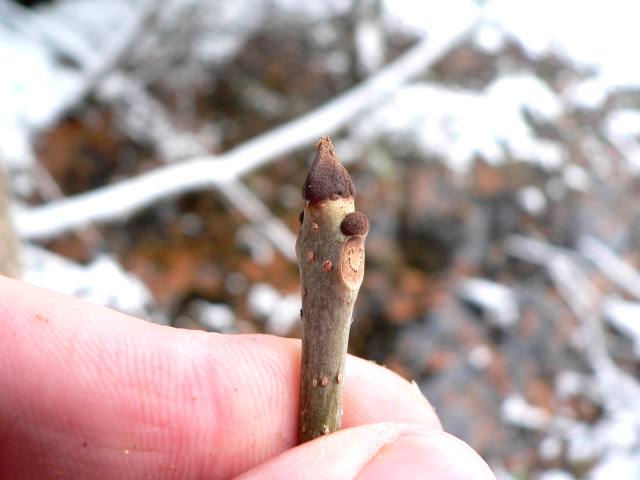
Black Ash twig, showing the space between the end bud and nearest lateral bud.
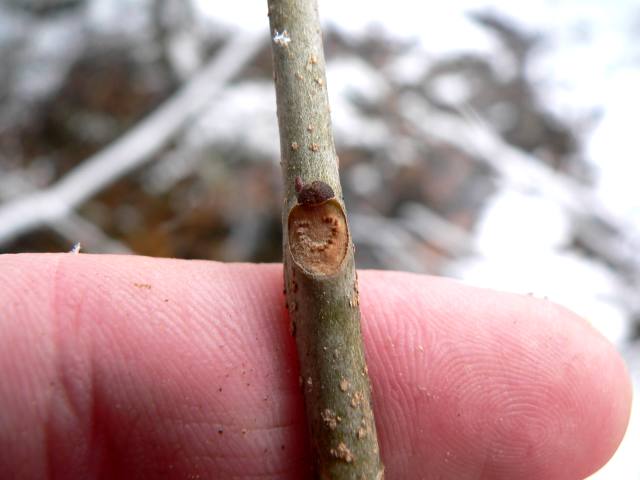
Typical leaf scar for most Ash trees (White Ash is more indented at the top).
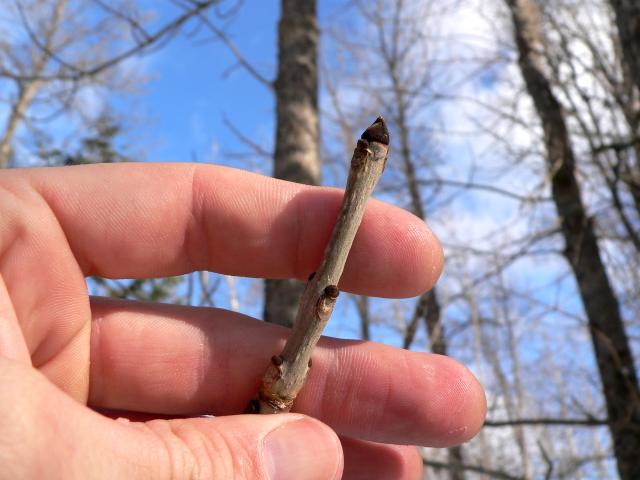
Black Ash winter twig.

A Red/Green Ash twig next to a Black Ash twig (right) showing the darker colour
of the buds and thicker twig of the Black Ash.

Young bark develops small corky ridges
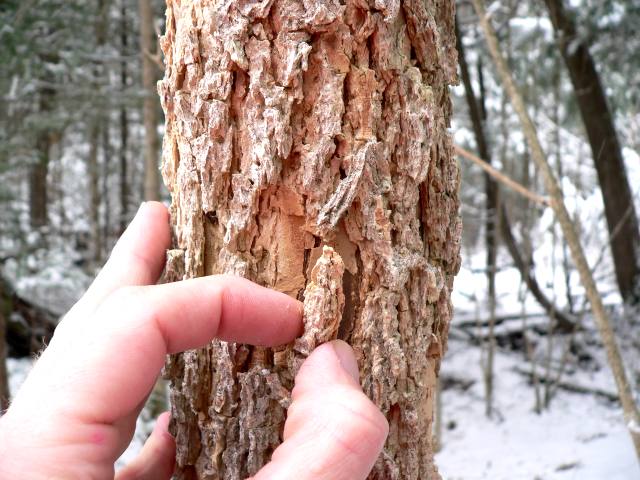
An extreme example of the corky bark of a young Black Ash.
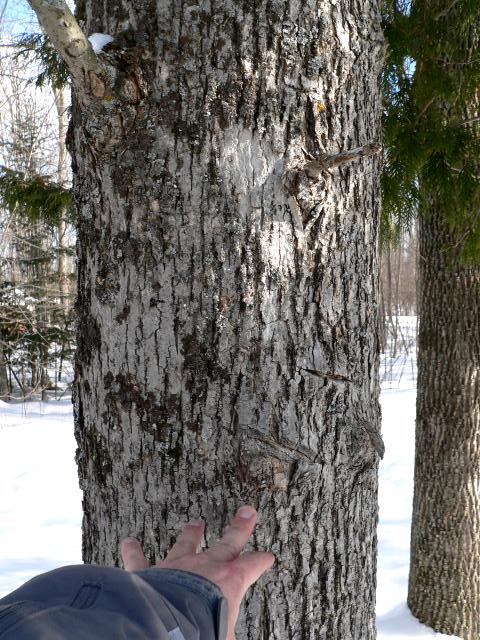
Bark of a mature Black Ash (that is a Green Ash to the right)

The twigs of Black Ash are quite stout and obvious from the ground.
The tree to the right is a Red Ash.

All ashes can be afflicted be a gall-making insect that causes the flowers to remain
on the tree through the winter. Though this is helpful in identifying an Ash from a distance,
it doesn't seem to be helpful in identifying the species. The one pictured is a Black Ash.
Back to the
main page
copyright
© 2007 Josh Sayers
please email me with any questions, comments, or errors